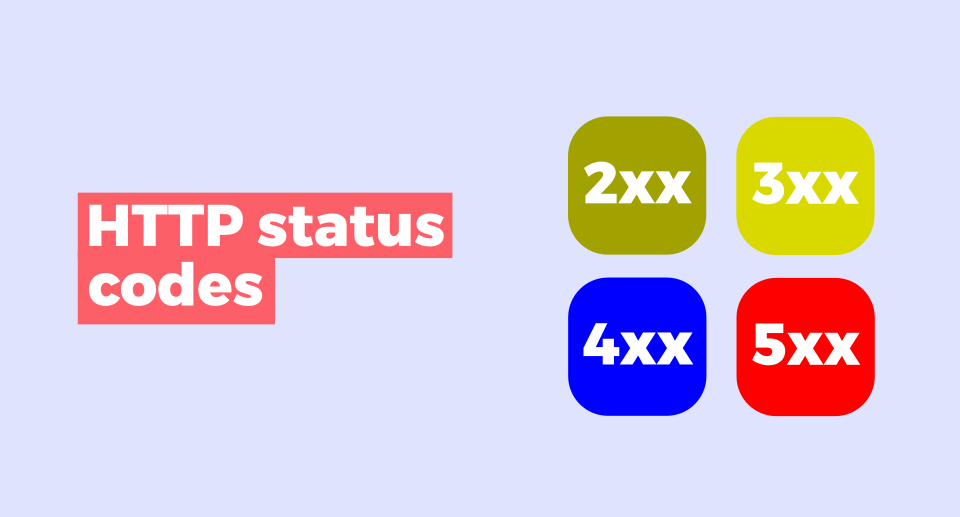HTTP status codes play a crucial role in the functionality and performance of websites, but their impact extends beyond technical matters. When it comes to SEO, understanding HTTP status codes becomes essential.
These status codes are crucial for search engines since they can influence how Google will crawl and index your pages effectively.
In this article, we will take a look at:
- What HTTP status codes are (and how they work).
- How individual status codes can impact your SEO efforts.
- How to check (and fix) HTTP status codes on your site.
What is an HTTP status code?
An HTTP status code is a server response to a request from a user’s browser. It is essentially the language used for transmitting data over the web.
In simple words, HTTP codes are little messages that servers send to indicate how they’ve handled a website request.
Think of it as the digital version of walkie-talkie communication — when your browser makes a request (“I need access to this webpage”), the server responds with status codes like “access granted” (2xx – successful response) or “redirecting you to another location” (3xx – redirect response).
Here are common categories of HTTP status codes in bite-sized pieces:
- 1xx – Informational responses: The request has been received, and it’s currently being processed.
- 2xx – Successful responses: The request was successfully received, understood, and accepted.
- 3xx – Redirect responses: The client (you and your browser) must take additional action to complete the request (often in the form of redirection).
- 4xx – Client error responses: The request contains bad syntax or cannot be fulfilled (e.g. when the user is requesting a URL that doesn’t exist).
- 5xx – Server error responses: The server failed to fulfill an apparently valid request.
How HTTP status codes work
We already established that HTTP status codes are the response that a server sends when you make a request.
But what does that mean, really?
Every time you type in a URL or click a link, you’re making an HTTP request. Your browser then sends a signal to the server (“Open this page, please”) and responds with a status line that includes the HTTP version, status code, and a status text.
For example, if the request goes through and everything is working, you might get a “HTTP/1.1 200 OK” response.
How do HTTP codes impact SEO?
HTTP status codes help Google discover, understand, and rank your web pages – they basically tell the search engine how it should interact with your website.
For instance, if Google sees a 200 status code, it knows it can check the page without any technical issues; if the result is a 404 status, Google knows that the page does not exist (and will ignore it).
A 301 or 302 status code on the other hand tells Google that your page has moved to another destination.
Every HTTP status code can in one way or another impact your website’s SEO performance.
Let’s take a closer look at each of the HTTP status responses from the SEO perspective.
2xx – Successful responses
A 200 status is like a green light for the search engine. It means Google can visit the page, analyze its content, and use it as a potential search result in SERP.
While 2xx HTTP codes don’t guarantee indexing, they are a signal that a website is healthy and available.
Healthy sites contribute to a good user experience, which is associated with higher search rankings.
In other words: 200 status codes make Google happy — and when Google is happy, your website wins.
3xx – Redirect responses
A 3xx status codes tell the search engine that the page has been redirected to a new location – this usually happens when you, for example, decide to change the URL of the web page.
Using 3xx status codes is a standard SEO practice that can help you keep your site healthy, manage its content and URLs, and improve the UX.
On a day-to-day SEO basis, you might be essentially using 2 types of 3xx status responses:
- 301 – This response tells Google that a page has permanently moved to a new destination, and it should update its records.
- 302 – Generally speaking, this response is used mostly for a temporary move.
4xx – Client error responses
When search engines see 4xx responses, they know that the page is unavailable and generally stop trying to index it:
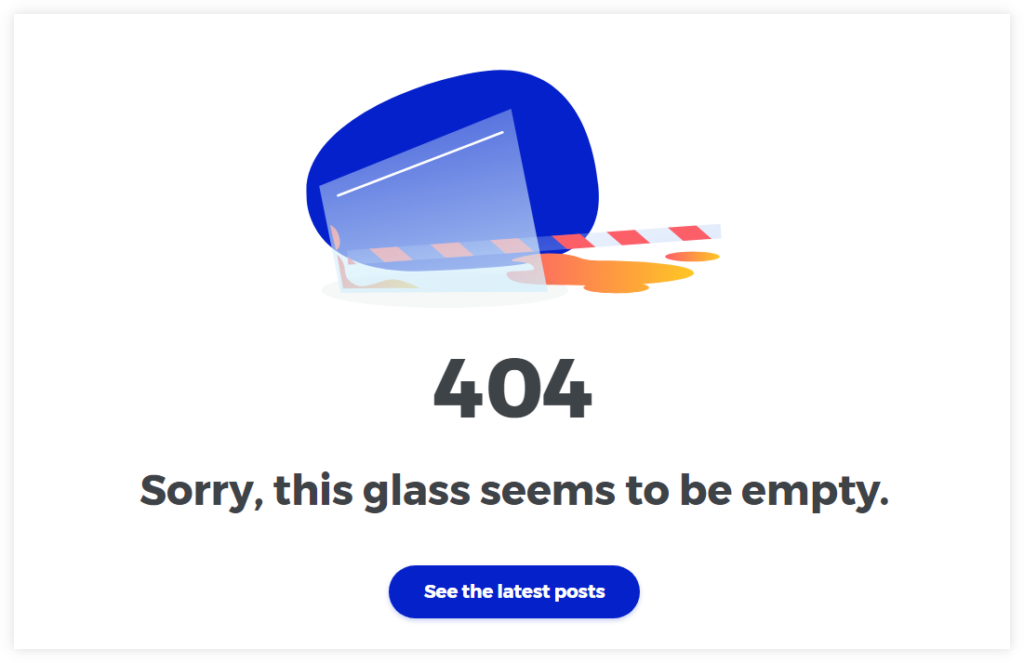
Although having a few unavailable pages happen from time to time, it can negatively impact your SEO if a significant portion of your site returns 4xx codes – Google might perceive your site as poorly maintained which will affect your rankings negatively.
404 is probably the most common type of 4xx – it essentially comes in 2 forms:
- Hard 404 error – The page doesn’t really exist and therefore the URL shouldn’t be indexed.
- Soft 404 error – It can be described as a “fake” web server response. A soft 404 error presents the page with a 200 OK HTTP response code even though the page does not exist.
5xx – Server error responses
Encountering a 5xx status code is like search engines hitting a brick wall. They indicate server-side issues preventing the pages from being displayed.
If these errors aren’t resolved promptly, they can force search engines to temporarily or even permanently deindex your pages, leading to a drop in your website’s visibility in search results.
5xx errors usually happen when a website goes offline (e.g. due to maintenance or some unexpected technical problem) – it is one of the most critical issues that can significantly hurt your SEO efforts.
Tip: If you would like to know more about the meaning of individual HTTP codes, make sure to check out this comprehensive article.
How to check HTTP status codes?
Being able to check HTTP status codes is an essential skill in managing your website’s SEO performance.
After all, you can’t fix errors unless you find them first!
a) Check them manually
Yes, you can manually check some of the HTTP status codes by using your browser’s DevTools – though be warned that this method is very time-consuming and you might end up missing some important information along the way.
If you’re up for it, you can simply:
- Open a browser like Google Chrome and right-click anywhere on a webpage
- Select “Inspect“, then click on the “Network” tab.
When you refresh the page, you’ll notice that you now see a list of network requests.
Click on the first one (usually the URL of the page), and you can see the HTTP status code under the “Headers” section.
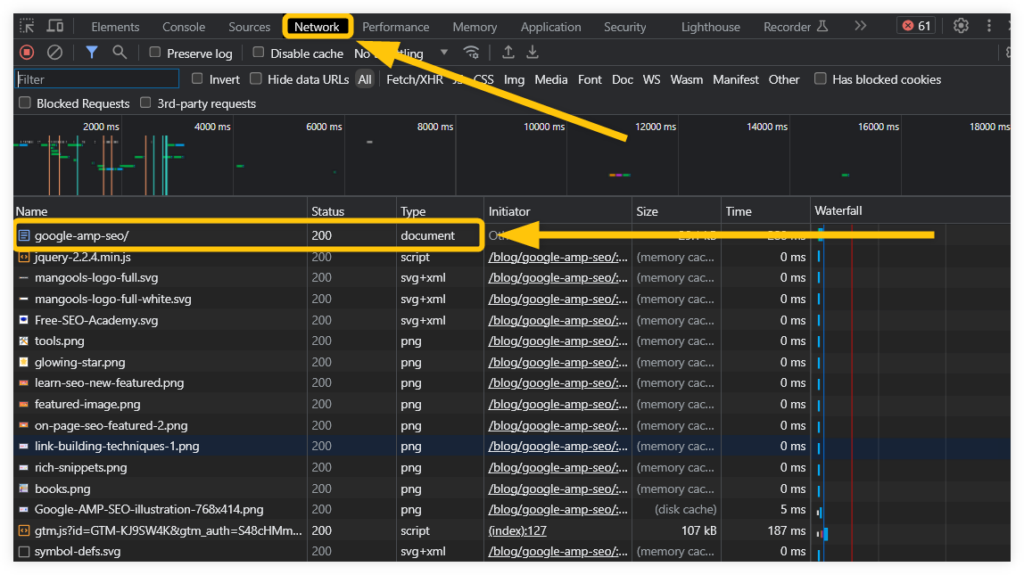
Tip: You can also use our Mangools SEO extension to quickly check whether some of your pages have links pointing to URLs that are unavailable (e.g. due to a 404 error) or have some server-side issues.
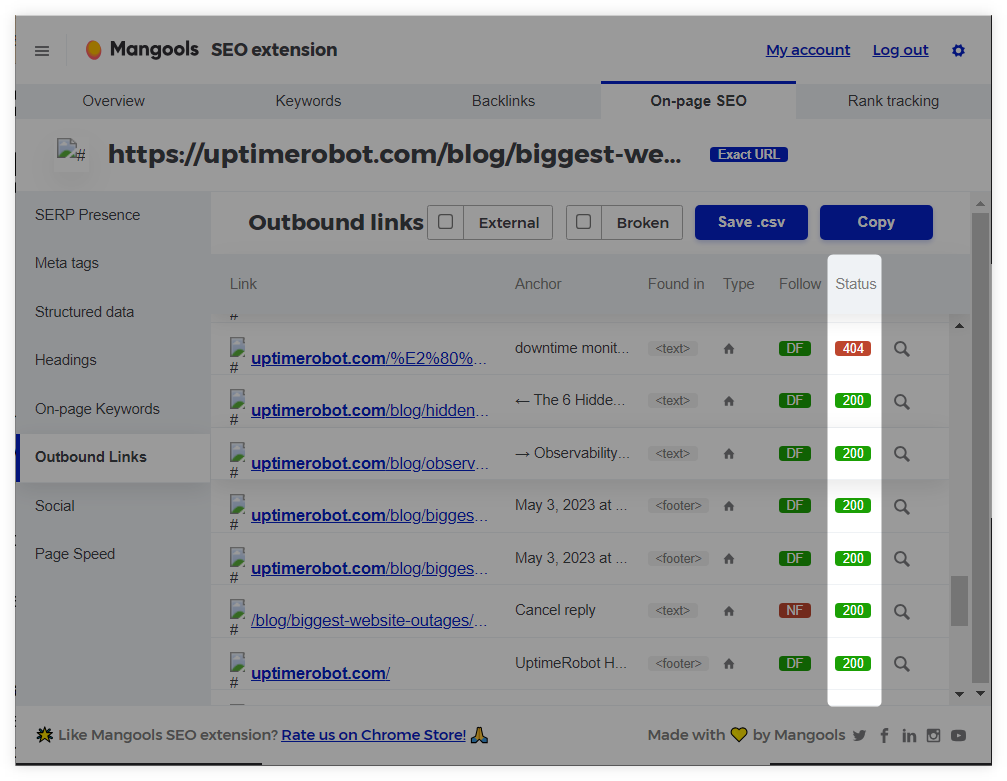
b) Use Google Search Console
GSC makes it easy for even novice webmasters to check indexing issues with their website by providing a list of URL errors that a site might have, including 404s and server-side errors.
To see how your pages are doing and check whether or not there are some technical issues, simply:
- Open up your GSC account
- Click on the “Pages” tab in the “Indexing” section
Google Search Console will then show you indexing issues on your website along with their HTTP status codes (e.g. 5xx server errors, 401 responses, etc.):
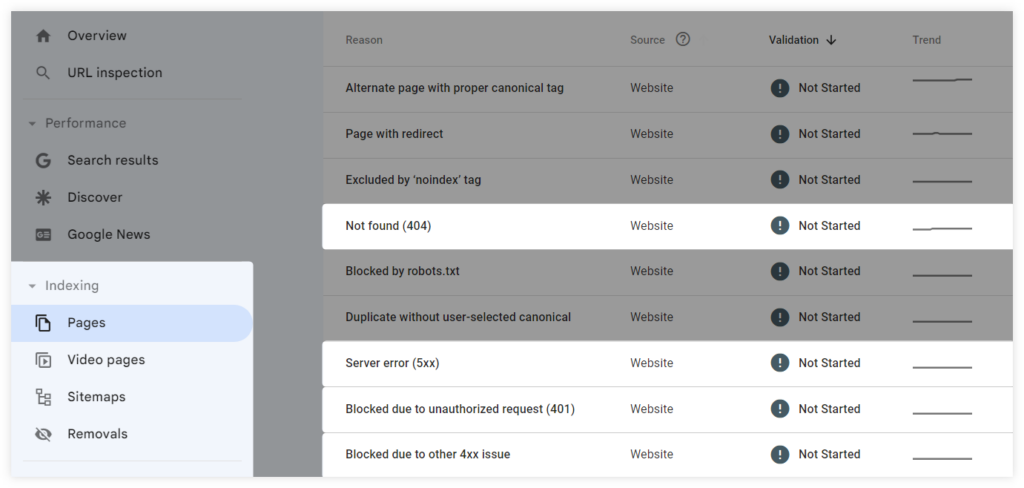
c) Try SEO audit tool
If you want to dive deeper into your website’s performance, you can use tools like Screamingfrog that allow you to check HTTP status codes on-site in bulks.
This is especially useful when dealing with large websites with hundreds of pages.

The software crawls your site (much like a search engine would) and returns tons of useful information, including HTTP status codes, so you can stay on top of any issues that might affect your website’s SEO performance.
When (and how) to fix HTTP status codes?
So, let’s say that you’ve checked your HTTP status codes and found a few URLs that might need some attention.
Most HTTP codes can be fixed easily, others might require a bit of technical experience:
- 200 OK – Do nothing: This is your server giving you a high-five. Everything is working as it should and search engines can easily find and index your pages.
- 4xx errors: Sometimes a 404 code shows up when you delete a page, in which case you might consider applying a 301 redirect in order to navigate users (and web crawlers) to a better place.
- 5xx errors: Act now because something is seriously wrong. 5xx errors indicate that search engines can’t access your pages, which can result in some serious SEO issues. In cases like these, you might need to contact your host provider in order to resolve your problem.
Best SEO practices for HTTP codes
Knowing what HTTP codes mean isn’t enough. In order to protect your SEO, you also need to handle them correctly.
Here are some tried-and-true best practices:
1. Perform regular SEO audits
SEO audits are like routine health check-ups for your website.
And since Google’s ranking algorithm likes healthy websites (meaning, sites without a lot of 4xx and 5xx status codes), keeping your website in good shape will improve your visibility in search engines.
2. Avoid redirect chains
Using 301 redirects is usually a good thing — unless you end up with redirect chains, which are basically a series of redirects that lead from one URL to another, then another, and so on.
Redirect chains aren’t annoying just for users, they can also significantly impact your SEO efforts.
Having long redirect hoops can make GoogleBot angry – after a few redirects, it will simply stop following the chain (and therefore not index a new URL). In addition to that, the value of the PageRank also diminishes a little bit after every redirect added.
3. Change links from the redirected URL to the new URL
It might seem simple, but it’s an often overlooked task.
If a page has been permanently moved (301), make sure that you change all links from currently leading to the old URL into the new one.
4. Monitor your website
If nothing else, you should always be checking your server’s performance at least.
Server downtime can severely hurt your SEO since search engines may see your site as unreliable.
Tools like UptimeRobot are designed to monitor HTTP(s) statuses and alert you when an HTTP status code error pops up.
For example, if your website goes down, UptimeRobot will instantly alert you – therefore you can fix any potential issues right when they occur on your site.
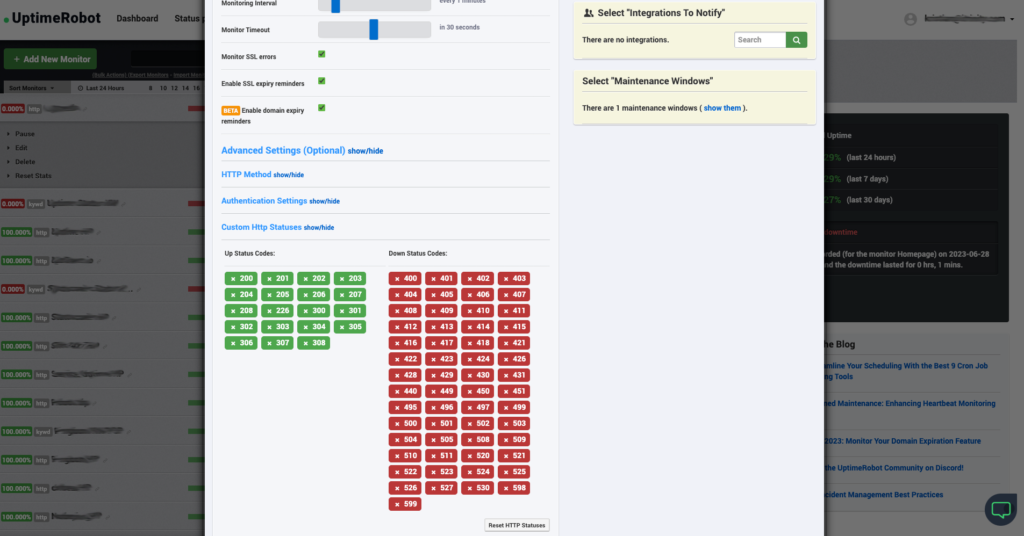
By following these best practices, you can use HTTP status codes to your advantage, ensuring search engines can easily access your content.
After all, the ultimate goal is to make your website more efficient, user-friendly and well-ranked in search engines.


